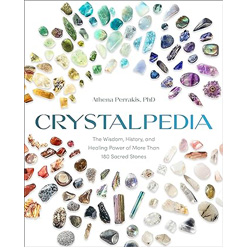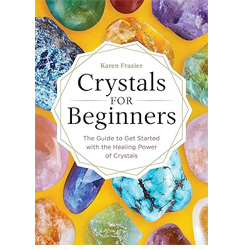- Jewelry
- Inspiration
- Our imagination
- Birthstones
- Celebrating with Eternal Flowers
- Druids and druidesses
- Flower meanings
- History, archeology jewelry
- History and healing properties of metals
- History and healing properties of stone
- Illumination jewelry
- Japanese symbols
- Maya calendar jewelry
- Stone color symbolism
- Stones catalogue
- Wedding anniversaries
- Searches a theme on the site
- Good Deals
- Paintings
- About
- Contact
JEWELRY
- Anklet
- Bracelets
- Brooches
- Cufflinks
- Earrings
- Pendants & Necklaces
- Rings
- Draw your jewelry
- How to clean your jewel
- Metal we used
INSPIRATION
- Our imagination
- Birthstones
- Celebrating with Eternal Flowers
- Druids and druidesses
- Flower meanings
- History, archeology jewelry
- History and healing properties of metals
- History and healing properties stones
- Illumination jewelry
- Japanese symbols
- Maya calendar jewelry
- Stone color symbolism
- Stones Catalogue
- Wedding anniversaries
- Searches a theme on the site

Silver: history, healing properties and lithotherapy
Silver properties
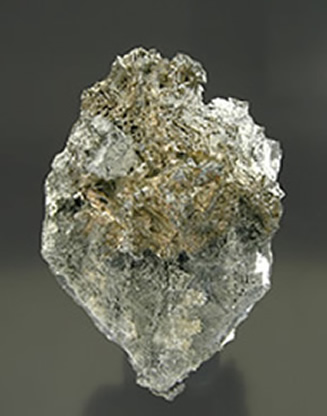
Silver, a ductile and malleable metal, surpasses gold in hardness. Its properties, which facilitate working with the metal, combined with its color and brilliance, have captivated humanity, making it one of the most prized metals.
Approximately 70% of the world’s silver production is dedicated to coinage, a practice that dates back several centuries. A significant portion of silver is used in the creation of jewelry and decorative objects, while a smaller percentage is employed in photography (notably with silver salts), medicine, and chemistry.
In English, the term "silver" comes from the Old English word "seolfor," which is related to the Proto-Germanic word "silubr," and further to the Proto-Indo-European root "sélh₂wr," meaning "silver" or "shining." This root reflects the metal’s characteristic luster and brightness. The word has cognates in several other Indo-European languages, such as the Latin "argentum" and the Greek "argyros," both of which also mean "silver" and are derived from similar roots indicating brightness or shining.
History of silver production
The origins of silver ore extraction date back to around 3000 BCE in Anatolia (Turkey), supplying the Near East, Crete, and Greece in antiquity.
Around 1200 BCE, Laurium in Greece became the major center of silver production, supplying the principal Mediterranean civilizations.
By around 100 CE, Spain took over as the main supplier for the Roman Empire.
The Moorish conquest of Spain led to a shift in the supply of silver to Europe, with small mines opening across the continent, particularly in Germany and Eastern Europe, between 750 and 1200. This geographical realignment marked a dynamic era in the history of silver extraction in Europe.
The major event that renewed the use of silver worldwide was the discovery of the Americas in 1492. Between 1500 and 1800, global silver production surged, with Bolivia, Peru, and Mexico alone accounting for 85% of this production. This boom was made possible by the intensive exploitation of New World silver mines, notably those at Potosí in Bolivia. The mercury amalgamation process, discovered in the 16th century, allowed for large-scale silver refining, significantly increasing the profitability of these operations.
The economic and social impact of this exploitation was immense, particularly in Europe, where the massive influx of silver caused significant economic upheavals, such as a severe inflation known as the "price revolution." Global demand for this precious metal continued to rise, supporting international trade and colonization.
This production boom continued with the discovery of new deposits in regions like the United States, Australia, Chile, and Japan. In the 19th century, California and Nevada became important production centers with mines such as Comstock Lode, which marked the history of the silver rush. The cyanidation method, developed in the 19th century, brought a new technological advancement in silver refining, further facilitating metal extraction from low-grade ores.
Today, extraction methods have evolved, incorporating modern techniques like heap leaching and the use of bacteria to break down ores. Silver, once essential for coinage, is now largely extracted for industrial uses, particularly in electronics and green technologies. The largest silver-producing nations today are Mexico, China, Peru, and Russia, representing a substantial share of global production. Silver remains a major player in the global economy, not only for its industrial uses but also for its role as a safe-haven investment.
Use of silver
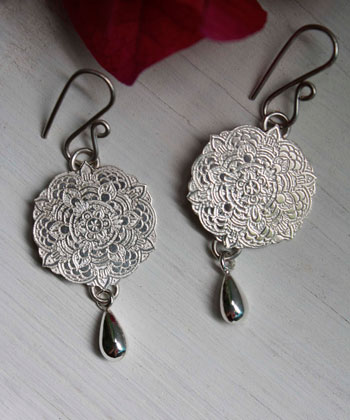
Silver, like gold, played a crucial role as currency in most of the world’s civilizations until the adoption of the gold standard in the late 19th century. The earliest uses of silver for trade date back to the Libyans around 700 BCE, marking the beginning of its importance in financial transactions. Subsequently, civilizations such as the Romans and Byzantines widely adopted silver as the basis of their monetary systems, minting coins that circulated throughout their empires.
Although silver is no longer the standard for currencies in modern economies, some countries continue to mint silver coins, often for commemorative purposes or as investments. Investors view silver as a means of diversifying their portfolios, particularly during periods of economic instability, where it serves as a hedge against inflation and currency devaluation.
The second predominant use of silver is in jewelry and silverware. Its malleability, brilliant shine, and relatively lower cost compared to gold make it a popular material for crafting refined jewelry. Silver is often alloyed with other metals, such as copper, to enhance its durability, resulting in both beautiful and resilient works of art. Silverware also symbolizes prestige and wealth in many cultures.
Due to its electrical conductivity, silver plays a key role in the electronics and electrical industries. Its conductivity surpasses that of any other metal, even when oxidized, making it the preferred material for critical components like electrical connections, electronic chips, computer keyboards, and smartphones. Silver electrical contacts are commonly used in switches, printed circuit boards, and rechargeable batteries.
The silver photography industry, although largely replaced by digital technologies, still makes use of silver, particularly in X-ray films and certain artistic photographs where the unique chemical quality of silver-based film is preferred. Silver is essential in these processes due to its light sensitivity, a property exploited since the 19th century.
Silver is also a material of choice in the manufacture of musical instruments, notably flutes and other wind instruments. Due to its acoustic properties, it provides a clear and bright sound. Additionally, silver components are incorporated into high-end speakers to improve sound transmission.
In the field of renewable energy, silver is indispensable in the production of photovoltaic solar panels, as it helps enhance the efficiency of converting light into electricity. Silver is included in photovoltaic cells to capture and transport solar energy.
Silver is also used for its antibacterial properties, whether in water purification or the manufacture of antimicrobial products. In water filtration, it is integrated into purification systems to eliminate bacteria and prevent algae build-up. Research has shown that silver can disinfect water by reducing the need for chemicals like chlorine. These antibacterial qualities are also exploited in the textile industry, where silver is added to fibers to prevent odors and inhibit microbial growth on sportswear.
Finally, in the medical sector, silver is used for its healing and antiseptic properties. It is found in wound and burn dressings, dental amalgams, and surface treatments for surgical devices, where it helps prevent infections.
Another ancient but still relevant use is colloidal silver, a suspension of silver nanoparticles in purified water. Used since antiquity for its antiseptic properties, it was a popular remedy before the advent of modern antibiotics. During the 19th and early 20th centuries, colloidal silver was prescribed for various infections. Today, although its medical use is controversial and regulated in some countries, it continues to be used by some people as an alternative supplement for its purported antimicrobial and immune-boosting properties. It is also used in certain products for disinfecting surfaces or purifying water, demonstrating its ongoing role in health and hygiene.
Its versatility makes silver an indispensable metal across various industries, from manufacturing to healthcare, and even space, where it is used in satellite components and aerospace equipment.
Mines: the main producer is Mexico (where we dwell) with 20% of the world production. Then you will find Peru, China, Australia, Chili, Poland, Russia, Bolivia, the USA, and Argentina…
History, legends and beliefs about silver
The use of silver dates back millennia, establishing its presence in various civilizations for the creation of ornaments, utensils, medical practices, trade, and the establishment of monetary systems. However, silver has often been relegated to a secondary position behind gold, the latter being rarer and captivating due to its color and brilliance, which closely resembles the sun.
The early association of gold with the sun naturally led to silver being considered its counterpart, linked to the moon. Thus, it is frequently symbolized by a crescent moon. This relationship between silver and the moon has imbued the metal with feminine symbolism, evoking qualities such as softness, purity, transparency, the soul, coldness, and fertility. Silver has been adopted as the symbol of many goddesses associated with the moon, embodying attributes related to these qualities. Notable lunar goddesses include Selene in Greece, who was often depicted with a crescent moon, and the Roman goddess Luna, who shared similar symbolism.

In Anatolia and the Aegean islands, slags dating back to 3000 BCE have been discovered, indicating an early understanding of separating silver from lead. This technological advancement allowed for more efficient silver extraction and marked the beginning of more sustained production.
The Egyptians placed great importance on silver, just after gold, which remained the solar symbol and the most valuable asset in their culture. In their mythology, gods had silver bones while their flesh was made of gold. Silver was particularly associated with the moon goddess, Isis, who represented fertility and magic.
In ancient Greece, silver was used to combat infections. Hippocrates, the "father of medicine," mentioned it in the treatment of wounds and the control of infectious diseases and ulcers. The Greeks also recognized silver’s antimicrobial properties, which influenced medical and hygienic practices.
Herodotus reports that the Persian king transported boiled water in silver flasks to prevent diseases. This practice is an early example of using silver in the purification and preservation of food and liquids. In Greek mythology, silver was as valuable as gold and was specifically linked to Artemis, the goddess of the hunt, who used silver weapons, including a bow and arrow tips or spears. This association reinforced the perception of silver as a sacred and powerful metal.
The Roman economy was closely tied to silver, making it the civilization that exploited it the most in history until the discovery of America. It is estimated that by the 2nd century CE, around 200 tons of silver were mined each year, with a circulating stock of 10,000 tons—5 to 10 times more than the total available silver in medieval Europe and the caliphate. Most of this silver came from the mines of Laurion in Greece, a region that remained a major center of silver production for centuries.
Silver also holds a significant place in Celtic mythology. An important mention involves Nuada, the king of the Tuatha Dé Danann (the people of the goddess Dana). After losing his right arm in the first battle of Mag Tuireadh, he was removed from the throne due to his disability. It was the god of medicine, Diancecht, who allowed him to regain power by crafting a silver arm for him.
In antiquity, silver is mentioned in the Book of Genesis and has always been associated with religious objects since the dawn of humanity. A reference in the New Testament mentions that Judas received 30 pieces of silver for delivering Jesus to the Roman soldiers.
Although Islam generally forbids jewelry for men, an exception is made for a silver ring worn on the little finger of each hand. Muhammad himself wore a silver signet ring as a seal, with gold being entirely prohibited for men. This tradition illustrates the symbolic importance of silver in Islamic rituals and practices.
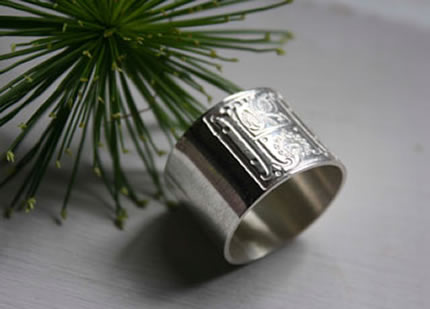
Silver holds a unique place in the Jewish community, having notable significance in Jewish law. Frequently referenced, the value of Babylonian silver currency serves as a constant benchmark, defining weight and standard value. This measure influences the salaries of religious court members and is integrated into various aspects of Jewish legislation.
The symbolic value of silver is also reflected in Jewish traditions. For example, the law stipulates that on the first anniversary of a family's firstborn, the priest receives five silver coins. Often, these coins are given to the child as a special gift, highlighting the role of silver in rituals and family celebrations.
Moreover, since the Middle Ages, silver salts have been used to color and tint stained glass, adding shades of yellow and orange. This artistic use reflects silver’s versatility in cultural and artistic expressions over the centuries.
During the Middle Ages, silver’s use in kitchen utensils spread due to these very properties. Silverware became a preferred choice in royal courts and aristocratic families, not only for its aesthetics but also for its ability to reduce the risk of disease. This practice became a symbol of social status and refinement, as owning silverware was not only a privilege of wealth but also an indication of attention to health and hygiene.
The expression "born with a silver spoon in one’s mouth" has its roots in this historical tradition. Originally, it referred to being born into a wealthy family that could afford silverware, a practice symbolizing material fortune and advantage from birth. Over time, this expression has evolved into a general symbol of wealth and privilege, even though its practical origins in hygiene and medicine have largely been forgotten.
American pioneers, aware of silver’s protective properties, placed silver coins in their canteens to preserve their water from contaminants, highlighting the ancient recognition of silver’s antibacterial properties.
In Chile, silver held particular significance as a symbol of the moon goddess, Auchimalgen. This association with the moon emphasizes the ancestral link between silver and lunar deities, even far from the old continent.
In popular beliefs, silver has often been considered a protection against various monsters, including vampires, witches, and werewolves. This belief has contributed to shaping the perception of silver as a talisman of safety in many cultures.
Interest in silver’s antimicrobial properties is not just historical. Today, colloidal silver—a suspension of silver particles in a liquid—is used in modern medical applications such as antiseptic bandages and skincare products. This continued use reflects the enduring effectiveness of silver’s beneficial properties, which continue to influence contemporary health and wellness practices.
Healing properties and benefits of silver
Throughout the long course of human history, silver has been surrounded by multiple, sometimes contradictory interpretations, to which various civilizations have assigned particular meanings. The information presented here follows a cultural and historical perspective, aiming to show how this metal has been perceived, valued, and invested with symbolic significance over the centuries. As with the other elements, this is a documentary outlook that does not constitute therapeutic advice nor reflect adherence to any belief system.
- Silver, often regarded in many traditions as supportive of mental balance and a sense of well-being, is frequently described as a metal that would diffuse a gentle, stabilizing energy. In several ancient corpora, it symbolizes inner equilibrium, clarity of mind, and a form of serene lucidity.
- Considered in some traditions as an amplifying metal, silver is described in certain sources as capable of enhancing the properties of the stones with which it is paired. This idea of synergy—widely mentioned in the literature of lithotherapy—rests on the perception of a harmonizing link between the metal and minerals, a theme already present in several ancient traditions.
- In the field of health, certain cultural interpretations attribute to silver a supportive role in situations of weakness or imbalance. For instance, some accounts mention silver in relation to conditions such as hepatitis—not as a direct treatment, but as a symbolic reinforcement of the body’s defenses and an overall improvement in vitality.
- Silver is also mentioned as facilitating the assimilation of vitamins A and E, two essential nutrients for maintaining the immune system, according to approaches that ascribe to it an influence on bodily regulation. These associations, present in several naturalist traditions, illustrate the place silver occupied in older conceptions of holistic health.
- On the visual plane, some historical sources link silver to clarity and eye protection. One finds the recurring idea that it could soothe eye fatigue or symbolically preserve sharp vision, a belief echoed in multiple cultural contexts.
- The protective virtues attributed to silver cover a wide range of ailments such as dermatitis, osteoporosis, certain forms of persistent flu, sinusitis, and rheumatism. These associations often stem from the metal’s long-standing antimicrobial reputation, documented since Antiquity, when silver vessels and instruments were used to limit contamination.
- Because of its antimicrobial properties—well attested throughout history—silver occupies an important place in many healing traditions, especially regarding wound care and infection prevention. Its use in various medicinal contexts, both ancient and modern, reflects the longstanding confidence placed in this metal to support tissue regeneration.
- Silver is also often associated with a calming effect on the nervous system. In several traditional accounts, it is perceived as an ally for easing fever, reducing certain inflammations, or soothing psychological tension. Over time, this symbolic dimension contributed to its association with relaxation, temperance, and physiological harmony.
- Silver is sometimes linked to the notion of restful sleep; in some traditions, it was thought to calm agitated thoughts and create an inner atmosphere conducive to nighttime rest—a role that prolongs its ancient connection with tranquility and mental harmony.
- One also finds the idea that it would offer protection against disruptive external influences; this broadly cultural interpretation aligns with a symbolic view of the metal as a barrier capable of preserving inner balance amid the agitation of the world.
- Certain representations attribute to it a role in maintaining the smooth circulation of energy in the body, particularly within systems connected to bodily fluids—a conception consistent with traditions that associated silver with flow, movement, and natural rhythms.
- In several symbolic narratives, silver is finally described as a guardian of purity and clarity; a quality reinforced by its historical association with the Moon and nocturnal light, perceived as forces capable of illuminating without dazzling and guiding without imposing.
 Please note that all healing properties attributed to stones come from ancient traditions and various cultural sources. This information is provided for informational purposes only and does not constitute medical advice. In case of any health concerns, it is recommended to consult a qualified professional.
Please note that all healing properties attributed to stones come from ancient traditions and various cultural sources. This information is provided for informational purposes only and does not constitute medical advice. In case of any health concerns, it is recommended to consult a qualified professional.
To learn more about litotherapy, we recommend you the following books:

